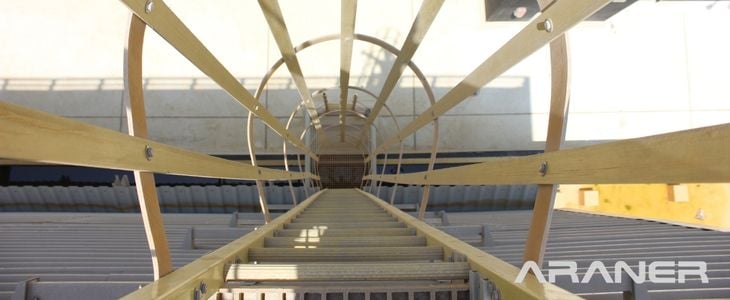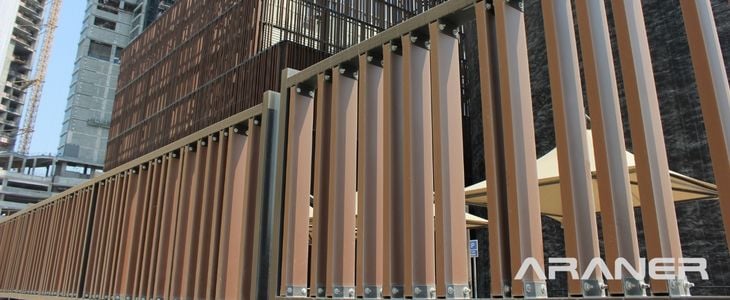While the district cooling market seems like a recent phenomenon, the truth is its history can be traced back to the 1930s. However, the current global efforts to move away from fossil fuels and find efficient technologies to meet growing energy demands have meant a renewed interest into what the right district cooling system can look like.
In such a context, questions arise about how this technology works, what its advantages are in comparison to other alternatives and how it may evolve. What is the present of the district cooling market and what potential shapes can it take in the future? Keep reading to find out.
The district cooling market now
A look into the current state of the district cooling market starts at understanding the basic premises of this technology. On a fundamental level, a district cooling system encompasses technologies following this pattern: a district cooling plant distributes thermal energy through a network of pipes that then reaches multiple buildings or consumers.
This means there’s no need for separate systems in individual buildings, but a central plant. Thus, it has been an adequate solution for certain contexts, such as those where there’s a concentration of cooling loads (for instance, densely populated urban areas).
The development and growth of the district cooling market has evolved concurrently to the profound transformations taking place in the current moment. In fact, the context of the current energy crisis, along with the quest for sustainable, efficient cooling structures has been vital to shape the present-day state of the district cooling market.
In fact, the IEA paints a full picture of the current context of a by describing it as “record prices, fuel shortages, rising poverty, slowing economies: the first energy crisis that's truly global.” The same organization also pinpoints some of the key responses that are taking place in this situation:
- Industries curbing their production
- Consumers adjusting energy use
- An acceleration in investments related to clean energy, particularly those that match all factors including energy reliability and efficiency, and those that are pollution and emission-free
It’s precisely when looking at this later aspect where the district cooling market comes in.

Why is the district cooling market growing?
All forecasts concur in anticipating a constant growth in the district cooling market in the coming decades. Polaris Market Research predicts a CAGR of 3.6% during the next decade; Fortune Business Insights goes further and predicts a CAGR of 8.9% in the same period.
These market research organizations also agree in identifying some of the key reasons behind this growth:
- An increased market demand for energy-efficient, sustainable structures. District cooling systems provide a sustainable alternative with environmental benefits that go beyond the move away from fossil fuels: they also use much less water and energy.
- Concordant government policies. More and more, governments are requiring construction projects to be energy-efficient and sustainable. This has meant project consultants and cooling industry experts have placed a heightened interest in technologies offering energy efficiency and sustainability, and often putting district cooling systems at the center of the spotlight.
- Economical and social transformations. A key push for the district cooling market has emerged from an increased need for cooling in areas where infrastructure hadn’t been established yet. For instance, this is the case of Middle East countries, where temperatures haven’t ceased increasing to a point where, during the warmest months, 70% of the energy consumed is related to cooling needs. This has taken place at the same time as these countries’ economical context has rapidly transformed, so that major investments in new and efficient cooling technologies are now possible.
Top trends for the district cooling market
1. A focus on commercial projects
Put simply, the district cooling market initiatives can be divided into the three categories of residential, industrial and commercial. Forecasts agree to give a particular weight to commercial initiatives in the coming years when it comes to revenue-generating enterprises, particularly in Middle Eastern countries.

2. Developments in particular geographic locations
The Middle East and Africa have experienced a particularly strong activity in the construction sector. Consequently, this has also influenced these regions becoming the largest market share for the district cooling market. But these are not the only geographical areas where district cooling initiatives are expected to thrive. For instance, the North American market is also expected to witness a high CAGR.
3. Increased operational control and efficiency
District Cooling technologies such as Araner’s DC Control System are now key components for the successful operation of cooling plants, allowing for these structures to perform all together as fully-integrated, unified systems. In the future, this technologies are also expected to play a key role in helping operators increase their efficiency.
New, more exact and unified operational control units are being developed, so that completely automatic and extremely efficient plants can exist. This is the case of user-friendly SCADA and Human Machine Interface (HMI) technologies aiming for full control and integration, as well as PAC (Programmable Automation Controller) systems.
4. TES tanks
TEST tanks facilitate thermal energy storage, adding benefits to District Cooling plants by enabling peak load saving, enhancements in efficiency, and increased operational reliability and availability.
These structures allow the transference of part of the cooling energy production from daytime to night time. This means operators can make the most of the night time efficiencies and relocate energy efforts to the time of the day when temperatures are higher and, consequently, energy efficiency levels are low. As a result, overall efficiencies significantly increase across the full year.
TES tanks are already a reality in the present-day district cooling market. This was the case of Araner’s success story at Qatar’s Football Stadium, where the challenge to reduce the interior temperature from 32ºC to 18-24ºC was managed thanks to a TES tank that stored the chilled water and then supplied it to refrigerate the building.
While many initiatives within the district cooling market are yet to incorporate this advancement, this solution can be added to retrofit DC plants in operation, all while guaranteeing the control system integrates the new TES facility and the hydraulics of the system are correctly consolidated.
5. Zero water consumption
The district cooling market is showing noteworthy efforts towards achieving a zero-water consumption. This is why dry-cooled or air-cooled solutions are experiencing a surge, providing an efficient water-to-energy nexus.
While this is particularly crucial in locations where water scarcity is a problem, the general tendency towards resource efficiency and sustainability also indicates dry-cooled systems will play an increasingly important role in the following years in the district cooling market.
6. Sea-water cooling
Sea water district cooling taps into the rich resource of seawater to achieve outstanding efficiencies in locations where this resource is abundant.
Through the use of water pumps, compressors, cooling towers and other components, an evaporative cooling process takes place that reduces the power required for running mechanical chillers.
What the district cooling market can offer today
The surge in the district cooling market has also meant a variety of companies offering their services to design, implement and perform maintenance operations have emerged. In this context, it remains essential to be able to discern what a reliable and professional district cooling company can look like.
From our decades-long experience in the district cooling sector, at ARANER we have gathered a few traits that define our work philosophy that have allowed us to accomplish a number of successful installations, while also remaining leaders in implementing efficient state-of-the-art equipment. As such, a few indications of a successful company in the district cooling market include:
- Being able to align the DC system to each location’s particularities, including unique weather scenarios. For instance, at ARANER we apply simulation methods able to predict accuracy on an hourly-based system, so that cooling demand is predicted with the most accuracy.
- The capacity to immerse in the project processes throughout its many stages and needs. This goes from conceptual design and analysis, to cost-benefit analysis, procurement and project delivery, and project implementation facilitation. The key here is to guarantee companies can also involve their clients in the process, so that their inputs are taken into consideration, while services such as full after sales support is also offered.
- Decades-long experience in the district cooling market and a multitude of projects have been completed translate into renowned expertise to undertake new projects and offer efficient yet also custom solutions to every client.
- The competence to design and implement innovative, efficiency-oriented solutions such as TES tanks
- The capacity to not disregard cost-efficiencies. A reliable company in the district cooling market is aware of the investments needed to make a project come about, and is able to design and implement projects that enhance cost-efficiency. This is the case, for example, of projects that look into relying on local resources and managing waste for increasing efficiencies.. A company’s ability to plan and execute a project properly will also greatly determine its final cost, hence the importance of finding a contractor with expertise and competence.
- Proficiency in meeting environment and regulatory compliance, including all activities surrounding the construction process.
At ARANER, we present a very substantial experience as part of the district cooling market and have been involved in the construction of a multitude of successful cooling plants, effectively adding value to end-users.
Want to learn more about what the district cooling market looks like in the present and how to ensure your project has access to the most efficient technologies today and in the coming years? Download our free ebook about district energy or get in touch with our team to find out more.










